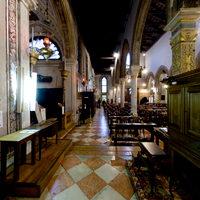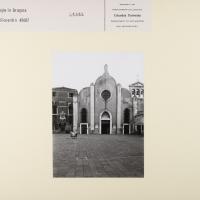Overview
The meaning of "in Bragora" is uncertain. It could refer to a square (agora), a fishing site (bragolare: to fish), or a marshy area (brago) combined with a stagnant canal (gora). Tradition has it that the first church on this site was among the twelve churches founded by St Magnus in the 8th century, but the earliest written record dates to the 9th. This later rebuilding being to house relics of St John the Baptist. Rebuilt again in 1178 and 1475. The current Gothic church is this late 15th century rebuilding. It was restored with baroque embellishments in 1728. The facade is transitional: harking back to the gothic of, say, the Frari but verging on the renaissance style of Codussi, who was said to have been inspired by this church when designing San Michele and San Zaccaria. The interior has a ship's-keel roof and old columns. The architect Massari, who designed the Gesuiati church, the Palzzo Grassi, and the Pieta where Vivaldi famously taught, is buried here. He is also thought to have been responsible for the redecoration of the chapel housing the remains of San Giovanni Elemosinario here, in 1745. Vivaldi was born in a house in Calle del Dose nearby on 4th March 1678 and was baptised in this church two months later on the 6th of May. In fact this was his second baptism - he'd been hurriedly baptised at home as it was thought that he was too sickly to survive. The font is on display here, as is a copy of the entry in the registry of births. Vivaldi became the choirmaster at the nearby church of the Ospedale della Pieta, the orphanage where he taught and for whose talented girls he composed most of his concerti and oratorios.
- Lorenzetti, Venice and Its Lagoon: Historical-Artistic Guide (Rome: Istituto Poligrafico dello Stato, 1961) as translated and with supplementary content by Taryn Marie Zarrillo, 2012/13

























